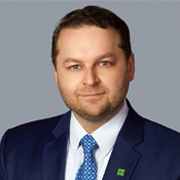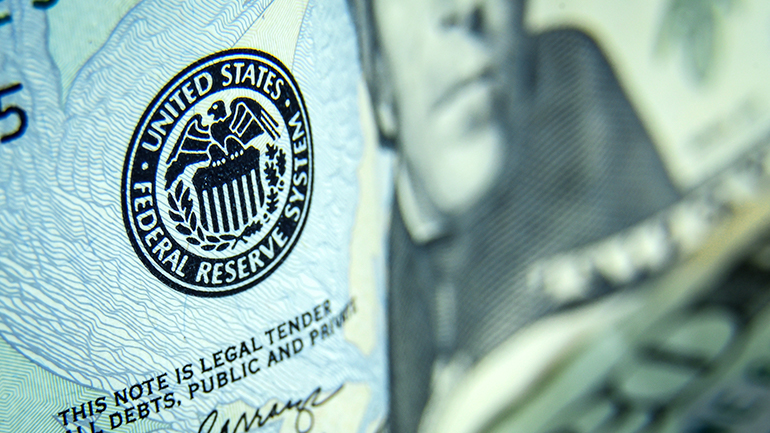December FOMC Preview: Calibrating a Higher Terminal
By: Jan Groen, Oscar Muñoz, Mazen Issa, Priya Misra, Gennadiy Goldberg
December 13, 2022 - 9 minutes 30 seconds
Overview
The October CPI report did seem to hint that core CPI inflation has peaked, with disinflation of core goods prices leading the way to some easing in core inflation over the coming months. Despite this hint of a peak in core inflation, underlying inflation rates remain stubbornly elevated, with core services inflation leading the way, a development that was also noted by FOMC members in the November meeting minutes. The main concern for the FOMC is that while inflation might not accelerate further, it likely is going to be sticky around elevated, above-target levels. Combine these still-high underlying inflationary pressures with financial markets pricing with almost certainty a 50bp rate hike for the upcoming meeting, and a 50bp upward move in the Fed funds target range next week is therefore a given.
Higher for Longer
In his Brookings Institute speech on November 30th, Chair Powell reiterated the message that slowing the pace of rate increases is likely coming soon. Furthermore, he made clear that despite this slowing the hiking pace, the Fed will need to continue to tightening policy, and "that restoring price stability will require holding policy at a restrictive level for some time." In line with what we described earlier, Chair Powell also singled out labor market tightness as the main source of elevated underlying inflation pressures, especially in relation to core service excl. housing inflation.
Nonetheless, the Fed's messaging during the inter-meeting period has been somewhat muddled as some Fed officials, including Chair Powell, gave the impression they would like to minimize the risk of over-tightening. Consequently, markets did not dial back the easing of financial conditions that had occurred since the October CPI report. We therefore expect that the December dot plot will signal the likelihood of a substantially higher terminal rate for 2023 than initially anticipated, both through a shift in the median and an upward tilt in the distribution of the dots, to make clear that the Fed has a ways to go before they are done with hiking. And Chair Powell will likely further underscore that with a post-meeting press statement that builds on the above-mentioned elements of his Brookings Institute speech.
Overall, the Fed has no other choice than to remain in tightening mode for the near future. We continue to project a tightening path into 2023 Q2 as outlined in our post-November FOMC meeting note, with 50bp hikes in December and February followed by 25bp increases in March and May, ending at a terminal Fed funds target range of 5.25%-5.50%.
FX Strategy
Early last month, we noted that the USD's correlation profile switched with the SOFR curve. That is, the USD has shown a heightened sensitivity to easing priced into the curve than the tightening portion. The switch came at the height of the UK gilt crisis as markets began to worry of broader contagion fears amid a near collapse of the LDIs. That correlation remains pretty sticky. We suggested two key implications: 1) a USD asymmetry to trade on the short side; and 2) a risk that the market will not listen to a hawkish Fed. Both have largely played out.
With the Fed having tightened 425bps by this meeting, it is natural for the market to assume that the end may be near or at the very least, be focused on thinking about the other side of the policy cycle. Indeed, the rates market looks to have comfortably and convincingly shifted to price in a recession trade with the bid in duration, despite the Fed having emphasized policy will remain at an elevated rate for a long period of time. Given the policy missteps over inflation (i.e. transitory) and its own outlook for hikes (the Fed had forecasted only 75bps of hikes this year only 9 months ago), it is hard to put much stock into what the Fed says about its own policy intentions or outlook.
Then there is the ECB meeting which has the potential to surprise with a 75bp hike. While that is not our base case (we look for a 50bps hike), we do see the risk that QT begins sooner than Q2 next year. That leaves the risk that the ECB could actually sound a bit more hawkish than the Fed. While we have a hard time seeing the ECB making up the policy deficit relative to the US, an earlier start to QT could dominate the aforementioned asymmetry around the USD.
Ultimately however, we may not even need to wait for the Fed or the ECB to determine USD direction from here with the US CPI report coming ahead of both and leaving scope for the Fed to maneuver and modify its wording. There we do not deviate from the early consensus forecast of 0.3% m/m core CPI; an on-consensus or softer core number will just reinforce bond market pricing, reluctant to push terminal higher, and leave the USD vulnerable to further short-term losses, while a positive surprise will likely fray some risk nerves. All told, we prefer to take a more definitive FX stance post-CPI, but at the moment, correlation profiles suggest that the bar is high to compel a USD reversal unless the data is stronger.
Rates Strategy
The move began with the October CPI report, and accelerated after the November FOMC minutes and Powell's remarks at Brookings. We think the market has been driven by two dynamics:
- Lower risk premium around the Fed terminal rate: With the lower October CPI print and the Fed signaling some concerns about not "overdoing tightening", the risk of a terminal rate much above 5% has decreased. This sentiment is evident even among global central banks, with the RBA and BoC suggesting that a pause is near. This dynamic explains the decline in market pricing of the Fed path as well as lower implied vol and decreased demand for higher rate protection. The pricing of the terminal rate has declined from 5.10% ahead of the October CPI to just 4.92% currently. In our view, the market is a bit optimistic about the endpoint of the Fed hiking cycle. Thus, we are biased towards higher front-end rates and a flatter curve. We are looking for the Fed to hike 50bp in December and February and 25bp in March and May to reach a terminal rate of 5.50%.
- Concerns about a 2023 recession: With some survey data looking weak (ISM, layoff announcements) and more focus on the lags that accompany monetary policy, we think the market's pricing of recession risks has increased. This is evidenced by the sharp increase in cuts being priced into 2024. The market is penciling in 200bp of cuts between mid-2023 (when the terminal rate is penciled in) and mid-2025. The cut pricing is not just a function of inflation but also growth as real rates have declined, flattening the curve to extreme levels. The market is correctly assessing the risk of recession in 2023 as the Fed is tightening policy via rate hikes and QT, and 10y real rates are significantly positive. However, markets may be somewhat optimistic about the length of the recession as they price in just 200bp cuts by mid-2025. We believe any recession may be longer due to a lack of fiscal support and delayed Fed response. The Fed will want to avoid repeating the mistakes of the 1970 easing, which only triggered further inflation. Thus, we look for lower 10y Treasury rates in 2023, but given the speed of their recent decline, we look for better levels to initiate any long duration positions.
Subscribing Clients can access the full reports: December FOMC Preview: Calibrating a Higher Terminal, The October CPI report, Wage Growth and Inflation Expectations: December Update, November FOMC: Pivot Higher, and USD: Correlation Switch on the TD Securities Market Alpha portal

Chief U.S. Macro Strategist, TD Securities

Chief U.S. Macro Strategist, TD Securities

Chief U.S. Macro Strategist, TD Securities

Vice President and U.S. Macro Strategist, TD Securities

Vice President and U.S. Macro Strategist, TD Securities

Vice President and U.S. Macro Strategist, TD Securities

Director and Senior FX Strategist, TD Securities

Director and Senior FX Strategist, TD Securities

Director and Senior FX Strategist, TD Securities

Managing Director and Global Head of Rates Strategy, TD Securities

Managing Director and Global Head of Rates Strategy, TD Securities

Managing Director and Global Head of Rates Strategy, TD Securities

Director and Senior U.S. Rates Strategist, TD Securities

Director and Senior U.S. Rates Strategist, TD Securities

Director and Senior U.S. Rates Strategist, TD Securities




